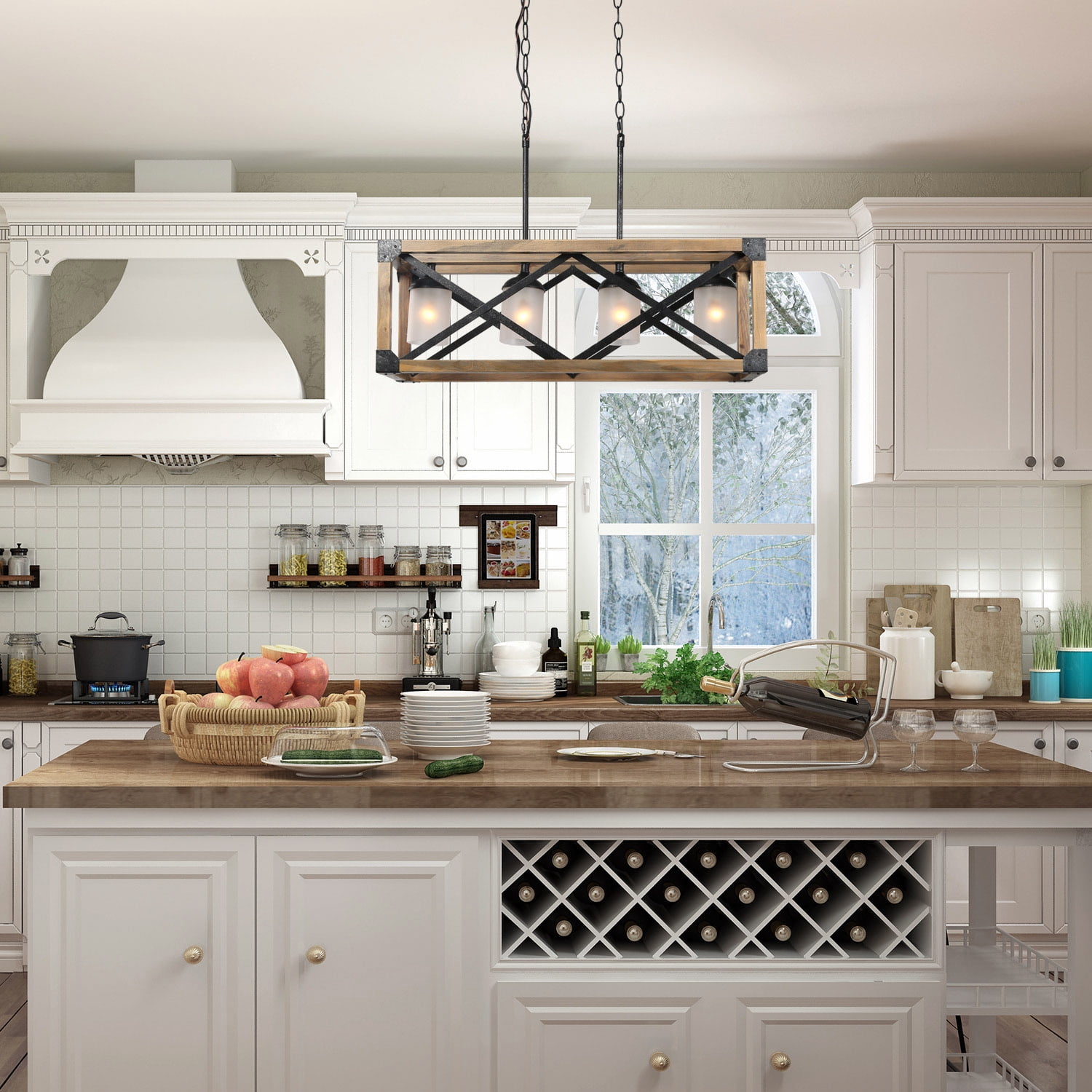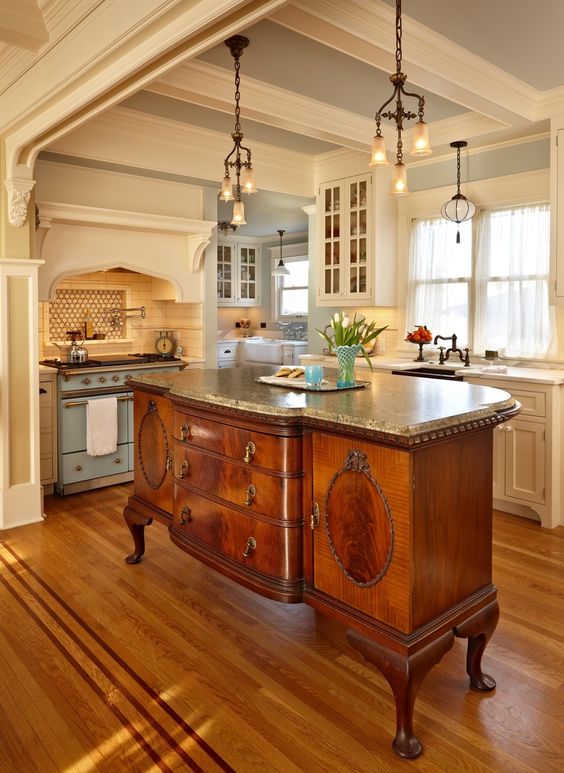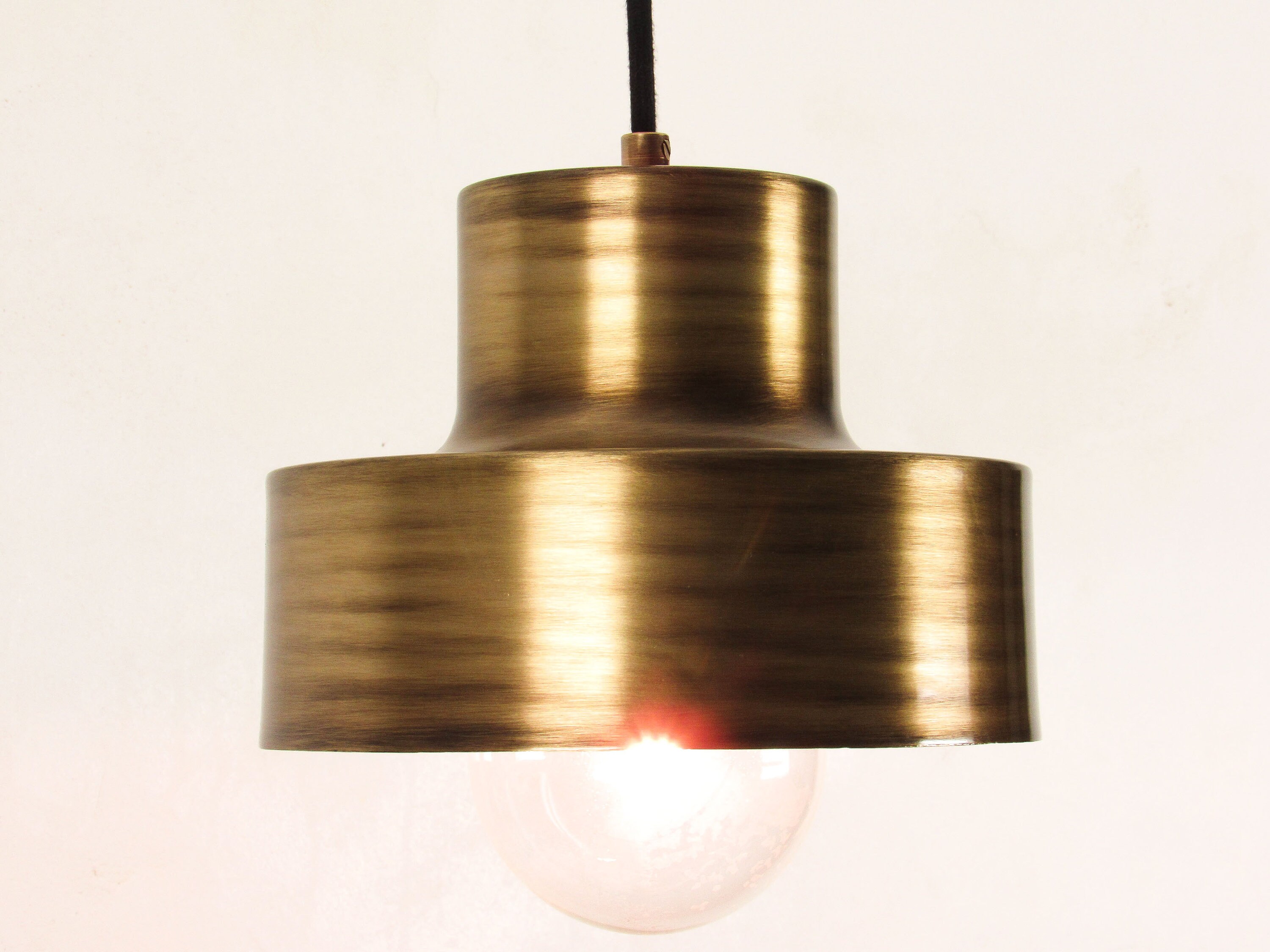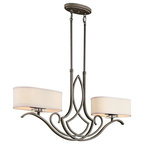When I decided to renovate my kitchen, I wanted to give it a unique charm that would set it apart from modern designs. That’s when I stumbled upon the idea of incorporating antique kitchen island lighting. Antique lighting can provide a distinct aesthetic that blends history and character with functionality. Choosing the right lighting for a kitchen island is crucial because it serves as a focal point for the room and provides necessary illumination for cooking, dining, and socializing. With antique lighting, there’s an added layer of depth and story, which makes every piece a conversation starter.
The first thing I learned when considering antique kitchen island lighting was the range of styles available. Antique lighting can range from Victorian and Edwardian designs to more rustic, industrial styles. Each of these styles carries its own historical significance and design characteristics. Victorian lighting, for example, often features intricate metalwork and glass shades, which add elegance and a touch of nostalgia to the kitchen. On the other hand, industrial lighting, with its rugged metal finishes and exposed bulbs, brings a more utilitarian yet stylish look. I was particularly drawn to the industrial style because of its bold and straightforward design, which added a unique contrast to my otherwise traditional kitchen decor.

Understanding the history behind each antique lighting piece was also essential. Each light fixture tells a story and brings a bit of history into the kitchen. For instance, a reclaimed brass pendant from the early 20th century might have once hung in a grand hotel lobby, or an industrial cage light could have illuminated a factory floor during the industrial revolution. Learning about these pieces made my choice more meaningful and personalized. It was like bringing a piece of history into my home. I found it helpful to visit antique shops and talk to the sellers about the origins of the pieces I was interested in.
Another key aspect to consider was the condition and functionality of antique lighting. Antique lights can often be more fragile than contemporary options due to their age and materials used. Some may require rewiring or restoration to ensure they meet current safety standards and function correctly. I had to weigh the aesthetic appeal of each piece against the potential cost and effort of restoring it. Eventually, I chose a pair of brass pendant lights from the 1920s that were already rewired, making them safe and easy to install. The restoration process can add to the cost, but it is worth it to ensure that the lighting is both safe and functional.

The scale and proportion of antique lighting fixtures are crucial in kitchen design. Antique lights come in various sizes, from small sconces to large chandeliers. I had to consider the size of my kitchen island and the overall space when selecting my lights. Too small a fixture would look lost, while something too large could overwhelm the space. I found a balance by choosing medium-sized pendants that provided enough light and added visual interest without overpowering the island. Measuring the space and visualizing how the lights would look in context was a critical step in the decision-making process.
I also learned about the importance of mixing and matching antique lighting with modern elements. While my primary goal was to create a vintage-inspired kitchen, I didn’t want it to feel outdated or out of place. By blending antique lights with contemporary appliances and cabinetry, I was able to achieve a balanced and eclectic look. The key was to ensure that the lighting complemented other design elements without clashing. For example, my vintage brass pendants harmonized well with the modern stainless-steel appliances, creating a cohesive and stylish look.

The type of lighting each fixture provided was another consideration. Antique lights can offer a range of lighting options, from soft ambient light to more focused task lighting. Since the kitchen island is a multifunctional space, I wanted fixtures that could provide enough illumination for food preparation and dining while also creating a warm and inviting atmosphere. Adjustable fixtures, such as those with movable arms or adjustable heights, can offer greater flexibility in directing light where it’s needed most. I chose pendant lights with adjustable chains, allowing me to customize the height and angle to suit different tasks.
When it came to choosing the right bulbs, I found that the type of bulb could significantly impact the look and feel of the antique lighting. Edison bulbs, for instance, are a popular choice for antique fixtures because of their warm glow and vintage filament design. These bulbs added an extra layer of authenticity to my lighting, enhancing the antique charm. However, they tend to produce a softer, less intense light, so I combined them with LED bulbs in other fixtures to ensure my kitchen was adequately lit. Understanding the bulb types and their compatibility with antique fixtures is crucial for achieving the desired lighting effect.
Maintenance and care for antique lighting fixtures were also on my mind. Unlike modern lighting, antiques may require more careful handling and cleaning due to their age and materials. I made sure to research the proper care techniques for the specific materials of my fixtures, such as brass, glass, or iron. Regular dusting and occasional polishing with the appropriate cleaning products helped maintain their luster and keep them looking their best. I also made sure to turn off the power before cleaning to avoid any accidents.
Antique kitchen island lighting can often be more environmentally friendly than modern fixtures. By choosing antique lighting, I was repurposing and recycling pieces rather than buying new products, which reduces waste and the demand for new materials. This aspect was important to me because I wanted to make sustainable choices in my renovation process. Additionally, many antique fixtures are made from high-quality materials like solid brass or iron, which are durable and long-lasting, further reducing the need for replacements over time.

I also considered the resale value of my home. Adding antique elements, especially in a space as central as the kitchen, can increase a home’s value and appeal to potential buyers who are looking for unique and character-filled properties. The antique lighting I chose gave my kitchen a distinct and memorable look that stood out from the typical modern kitchens seen in many homes. While this wasn’t my primary motivation, it was a nice bonus to know that my design choices could potentially enhance my home’s market value.
Finding the right balance between aesthetics and functionality was a challenge. Antique lighting adds charm and character, but it must also serve its primary purpose of illuminating the kitchen effectively. This balance required thoughtful planning and consideration of how each fixture would function in the space. I spent a lot of time testing different placements and configurations to ensure that the lights not only looked good but also provided the necessary illumination for cooking, cleaning, and entertaining.
Installing antique lighting required some specialized skills. I realized that antique fixtures might not come with modern mounting hardware or could have outdated wiring. I decided to hire a professional electrician who had experience with antique lighting. They helped me safely install the fixtures and ensure they were up to code. This step was crucial because I wanted to preserve the integrity and safety of my home while enjoying the unique look of antique lighting.

Exploring different sources for antique lighting was also an adventure. From antique stores and flea markets to online auctions and estate sales, there are numerous places to find unique and authentic pieces. I enjoyed the process of searching for just the right fixtures that fit my vision and budget. It was a rewarding experience that allowed me to connect with different pieces of history and bring them into my home. I found that patience and persistence were key, as the perfect piece might not always be immediately available.
Budgeting for antique kitchen island lighting was another important consideration. While antique pieces can be more expensive than mass-produced modern fixtures, they also offer unique value and quality. I set a budget that allowed for some flexibility, knowing that I might need to spend a little more on a piece that truly stood out to me. Additionally, I factored in potential restoration costs, which could vary depending on the condition of the fixture. By planning my budget carefully, I was able to make informed decisions and find antique lighting that was both beautiful and within my price range.
Overall, choosing antique kitchen island lighting was a fulfilling and enriching experience. It allowed me to personalize my kitchen and create a space that was both functional and full of character. The process required careful planning, research, and sometimes a bit of compromise, but the end result was worth it. Every time I enter my kitchen, I’m greeted by the warm glow of my antique lights, which adds a unique ambiance and a sense of history to the space. It’s a design choice that I am proud of and one that has truly transformed my home.

Common Mistakes to Avoid
One common mistake is not considering the size and scale of antique lighting fixtures in the kitchen space. It’s easy to fall in love with a piece, but if it’s too large or too small, it won’t look right. Another mistake is neglecting to check the electrical wiring of antique fixtures. Many older lights require rewiring to be safe for modern use.
Additionally, people often overlook the importance of matching the fixture’s style to the overall design of their kitchen, resulting in a disjointed look. Some also fail to account for the need for adequate lighting for tasks, choosing fixtures that look good but don’t provide sufficient light. Lastly, not setting a budget for both the purchase and potential restoration can lead to unexpected costs.

What are some popular styles of antique kitchen island lighting?
Popular styles of antique kitchen island lighting include Victorian, Edwardian, Art Deco, and industrial. Victorian and Edwardian lights are known for their ornate designs and intricate metalwork, often featuring brass or bronze finishes with glass shades. Art Deco fixtures, on the other hand, are more geometric and streamlined, reflecting the modernist design trends of the early 20th century. Industrial lighting, which I personally love, offers a more rugged look with metal finishes and exposed bulbs. Each style offers a different aesthetic and can add unique character to your kitchen, depending on your design preference.
How do I choose the right size for antique kitchen island lighting?
Choosing the right size for antique kitchen island lighting involves considering the scale of your kitchen and the island itself. A general rule of thumb is to select fixtures that are about one-third the width of your island for balance. However, it’s also important to think about the height of your ceilings and the distance from the countertop to the bottom of the fixtures. I found that medium-sized pendants worked well for my kitchen, providing sufficient light without overwhelming the space. Measuring your space and visualizing how different sizes will look can help ensure a good fit.
Can I use LED bulbs in antique lighting fixtures?
Yes, you can use LED bulbs in antique lighting fixtures, but it’s essential to choose bulbs that match the fixture’s aesthetic and are compatible with its wiring. I opted for Edison-style LED bulbs, which mimic the look of traditional filament bulbs but offer the energy efficiency and long lifespan of LEDs. It’s also important to check the fixture’s wattage rating to ensure the bulbs won’t overheat or damage the fixture. Using LEDs allowed me to enjoy the charm of antique lighting while also benefiting from modern energy savings.

How do I clean and maintain antique kitchen island lighting?
Cleaning and maintaining antique kitchen island lighting requires gentle care to preserve the fixture’s materials and finishes. I use a soft cloth and a mild cleaner specifically designed for the material—whether it’s brass, glass, or iron. It’s crucial to turn off the power before cleaning and avoid using abrasive cleaners that could damage the finish. Regular dusting and occasional polishing help keep my antique lights looking their best. If a fixture needs more extensive cleaning or restoration, consulting a professional with experience in antique lighting is a good idea.
Is it expensive to install antique kitchen island lighting?
The cost of installing antique kitchen island lighting can vary depending on the condition of the fixtures and the complexity of the installation. If the fixtures need rewiring or restoration, these costs should be factored in. I found that hiring a professional electrician with experience in antique lighting was essential to ensure the installation was safe and up to code. While this added to the overall cost, it was worth it for the peace of mind and the beautiful final result. Budgeting for these expenses upfront can help avoid surprises.
Where can I find authentic antique kitchen island lighting?
Authentic antique kitchen island lighting can be found in various places, including antique shops, flea markets, online auctions, and estate sales. I enjoyed the process of exploring different sources and learning about the history behind each piece. Antique dealers and shops often have knowledgeable staff who can provide insights into the origins and craftsmanship of the fixtures. Online platforms also offer a wide selection, but it’s important to verify the authenticity and condition before purchasing. Patience and research are key to finding the perfect piece that fits both your style and budget.

Rustic Lighting

Vintage Pendant Light Antique Kitchen Island Black Brass Etsy

Painted Kitchens

Related Posts:
- How To Install Kitchen Light Fixture
- Kitchen Pendant Lighting Placement
- Energy Saving Lights For Kitchen
- Over Kitchen Sink Led Lighting
- Recessed Lighting Spacing Kitchen Cabinets
- Kitchen Lighting Regulations
- Grow Light Kitchen Herb Garden
- Cream Kitchen Ceiling Lights
- Images Of Recessed Lighting In Kitchens
- Kitchen Lighting Design Ideas Photos